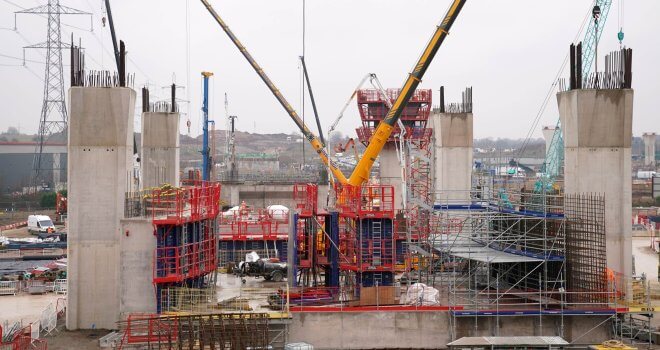British Cost Of Living Crisis To Have Severe Impact On Economic Growth -Poll

The cost of living crisis in Britain will have a severe impact on economic growth this year but the Bank of England will still lift interest rates again next week, marking its fourth consecutive meeting of increasing borrowing costs, a Reuters poll found.
Inflation hit a 30-year high last month of 7.0% and the poll suggested it would be higher this quarter, meaning households are facing the biggest cost-of-living squeeze since records began in the 1950s, according to Britain’s budget forecasters.
Supply chain disruptions caused by the coronavirus pandemic have been exacerbated by Russia’s invasion of Ukraine and renewed lockdowns in China while energy bills have soared and taxes have risen, putting a big dent in consumer spending power.
When asked what impact the cost of living crisis would have on growth 17 of 22 economists said it would be severe and one said very severe. Only four said it would be mild.
“The shock to real incomes was already in the making in autumn last year, but the scale of the problems we are seeing right now is unimaginable,” said Stefan Koopman at Rabobank.
It will be over a year before the crisis eases significantly according to more than half the respondents to another question.
Prices are set to rise 8.4% this quarter, more than four times the BoE’s 2.0% target and sharper than the 7.7% prediction given last month. It will then ease gradually over the coming quarters but median estimates did not show it at target until the tail end of 2023.
Like its global peers the BoE slashed borrowing costs to a record low at the start of the pandemic to support growth but began the current tightening cycle in December.
Thirty-three of 44 economists in the April 19-25 poll said the Bank would add another 25 basis points when it meets on May 5, taking Bank Rate to 1.00%. Ten said there would be no change while one expected a 50 basis point increase.
Investors are pricing in a decent chance of a 50 basis point rise – a move the Federal Reserve is widely expected to deliver next month and again in June.
“Given this is the first forecast round since the invasion of Ukraine, with commodity prices having risen sharply as a result, we can understand this view. On balance, we don’t think it will be quite as hawkish as the market expects,” said Elizabeth Martins at HSBC.
The Bank will follow up the May 5 increase with another 25 basis points rise next quarter and the same in early 2023 medians showed, taking Bank Rate to 1.50% where it will sit for the remainder of 2023.
However, there was quite a split in views with ten seeing Bank Rate lower than the end-2022 median of 1.25%, 17 seeing it at that level and 20 thinking it would be higher. The most aggressive end-year forecast was for 3.00%.
Britain’s economy is losing pace as the cost of living crisis bites, recent data has shown, and was expected to expand just 0.1% this quarter – a steep downgrade from the 0.4% predicted last month. It will then grow 0.3% the following two quarters.
Over this year the economy will grow 3.8% on average and then expand 1.7% next year, median forecasts of around 70 economists showed. Reuters’ January poll had forecast 2022 growth of 4.5%.
Last week the International Monetary Fund cut its 2022 growth projection to 3.7% from 4.7% forecast in January and the 2023 outlook to 1.2%, saying Britain faces slower economic growth and more persistent inflation than any other major economy next year.
(Reporting by Jonathan Cable, Polling by Milounee Purohit and Vijayalakshmi Srinivasan; Editing by Toby Chopra)




